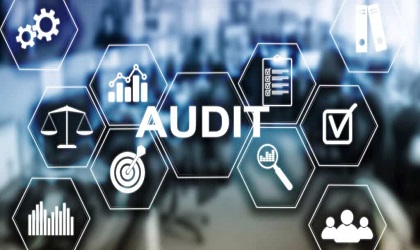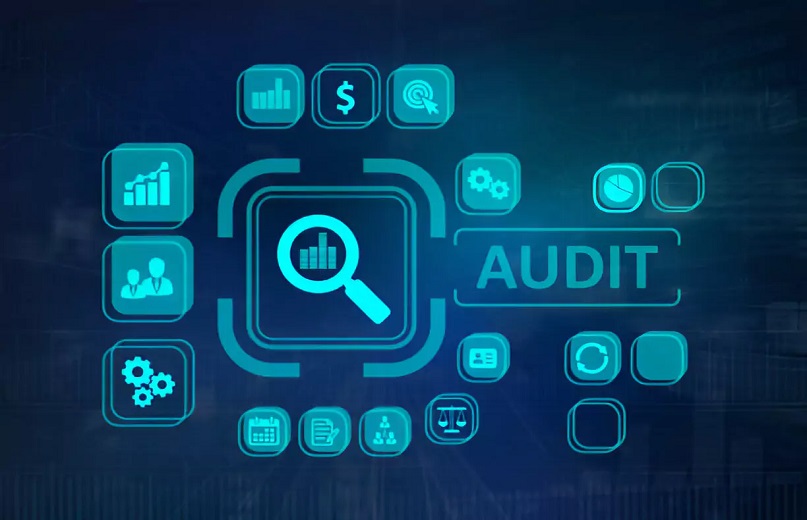In todayâs digital world, where businesses rely heavily on technology to operate, the need to secure and ensure the integrity of these information systems has become more important than ever. This is where Information Systems (IS) Audits come into play. An IS Audit examines an organizationâs IT infrastructure, policies, operations, and security measures to ensure that they meet specific standards, comply with regulations, and align with business objectives.
This article explores what an IS audit is, its purpose, key areas of focus, and the benefits it provides to businesses.

Definition of IS Audit
An Information Systems (IS) Audit is an evaluation of an organizationâs IT systems, processes, and policies. It aims to assess the effectiveness, security, and reliability of these systems to ensure they support the organizationâs goals while mitigating risks such as data breaches, system failures, and regulatory non-compliance.
Unlike financial audits, which focus on a companyâs financial statements, IS audits focus on the technological infrastructure that supports the business. They examine a wide range of areas, including IT governance, system controls, data security, disaster recovery planning, and more.
Objectives of IS Audit
The primary objectives of an IS audit are to:
- Evaluate IT Systemsâ Reliability and Integrity: The audit ensures that IT systems are functioning correctly, providing accurate, complete, and reliable information.
- Assess IT Security: The audit assesses the organizationâs security posture, ensuring that information is adequately protected from unauthorized access, cyber threats, and data breaches.
- Review Compliance with Standards and Regulations: Many industries are subject to regulatory requirements such as GDPR, HIPAA, or PCI DSS. An IS audit ensures that the organization complies with relevant laws and standards.
- Examine Internal Controls: IS audits assess the effectiveness of internal controls over IT processes and systems, including access control, change management, and user permissions.
- Identify IT-Related Risks: Auditors help identify risks associated with IT systems and recommend ways to mitigate these risks, such as implementing stronger security measures or upgrading outdated systems.
- Support Business Continuity: IS audits assess disaster recovery plans and backup procedures to ensure the organization can continue operations in case of system failures or data loss.
Key Areas Covered in an IS Audit
An IS audit typically covers several critical areas, ensuring a comprehensive assessment of the IT environment. These areas include:
1. IT Governance and Management
IT governance focuses on ensuring that the organizationâs IT strategy aligns with its overall business goals. Auditors examine the effectiveness of the organizationâs IT governance framework, including its structure, policies, and procedures. This helps ensure that IT investments and resources are being used efficiently to support business objectives.
2. Security and Access Controls
IS audits review the security measures implemented to protect sensitive data and IT systems from unauthorized access, cyberattacks, and breaches. This includes evaluating firewalls, encryption protocols, multi-factor authentication, and access control systems. The audit also examines whether the organization has implemented proper user access management policies to limit permissions based on job roles.
3. Data Privacy and Compliance
With stringent data privacy regulations like GDPR (General Data Protection Regulation) and HIPAA (Health Insurance Portability and Accountability Act), organizations must ensure that they are handling and storing sensitive information in compliance with the law. An IS audit checks for compliance with these regulations, ensuring that the organizationâs data-handling practices protect personal and sensitive information.
4. IT Infrastructure and Operations
The infrastructure audit assesses the hardware, software, and network components of the IT environment. It examines system configurations, operating systems, and software licenses to ensure that everything is properly maintained and up to date. This also includes reviewing data center operations, backup procedures, and cloud-based systems to identify potential risks or inefficiencies.
5. Disaster Recovery and Business Continuity
Auditors review the organizationâs disaster recovery plans (DRP) and business continuity plans (BCP) to ensure they are adequately prepared for potential disruptions. This includes assessing backup systems, recovery time objectives (RTO), and recovery point objectives (RPO), as well as testing whether these plans can effectively minimize downtime and data loss during a disaster.
6. Change Management
Change management refers to the processes in place to control changes in IT systems, such as software upgrades or hardware replacements. IS audits review the change management procedures to ensure that all changes are authorized, documented, and tested before implementation, minimizing the risk of errors or system downtime.
7. IT Asset Management
This area involves the management of IT resources such as servers, databases, software, and networks. IS audits ensure that the organization is effectively tracking and managing its assets, ensuring that they are used optimally and protected against unauthorized access or loss.
Types of IS Audits
There are different types of IS audits, each focusing on specific areas of an organization’s IT environment:
- General Control Audits: These focus on the overall policies, procedures, and controls in place to protect IT systems, including access control, disaster recovery, and data security.
- Application Control Audits: These audits evaluate the controls around specific applications, such as accounting software, to ensure data integrity, security, and reliability.
- Compliance Audits: Compliance audits assess whether an organization is following external laws and regulations that apply to their industry, such as HIPAA, GDPR, or PCI DSS.
- Operational Audits: These audits assess the efficiency and effectiveness of IT operations, focusing on areas such as system performance, resource utilization, and incident management.
- Technical Audits: A technical IS audit examines the technical components of the IT infrastructure, such as network security, firewalls, servers, and databases, to assess their configuration and vulnerability to cyber threats.
Benefits of IS Audit
Conducting regular IS audits offers several key benefits to organizations:
- Enhanced Security: An IS audit identifies weaknesses in an organizationâs IT systems and recommends improvements to enhance overall security, reducing the risk of data breaches, cyberattacks, and unauthorized access.
- Improved Compliance: By evaluating the organizationâs adherence to regulatory standards, an IS audit ensures compliance with industry laws and regulations, helping avoid penalties and reputational damage.
- Risk Mitigation: The audit helps identify and assess risks associated with IT operations, providing insights into areas where controls can be strengthened to reduce the potential for system failures, data loss, or other incidents.
- Operational Efficiency: An IS audit evaluates the efficiency of IT processes, enabling organizations to streamline operations, reduce downtime, and make better use of resources.
- Informed Decision-Making: By providing a comprehensive view of IT performance and risks, IS audits enable senior management to make informed decisions about technology investments, security measures, and disaster recovery planning.
Conclusion
An Information Systems Audit (IS Audit) is a critical tool for organizations to evaluate the effectiveness, security, and compliance of their IT systems. It ensures that IT infrastructure supports business objectives, protects sensitive data, and complies with industry standards. By identifying vulnerabilities, enhancing security, and improving operational efficiency, IS audits play a vital role in maintaining the integrity of an organizationâs digital environment in a rapidly evolving technological landscape. Regular IS audits help businesses stay competitive, secure, and compliant in an increasingly complex IT ecosystem.



